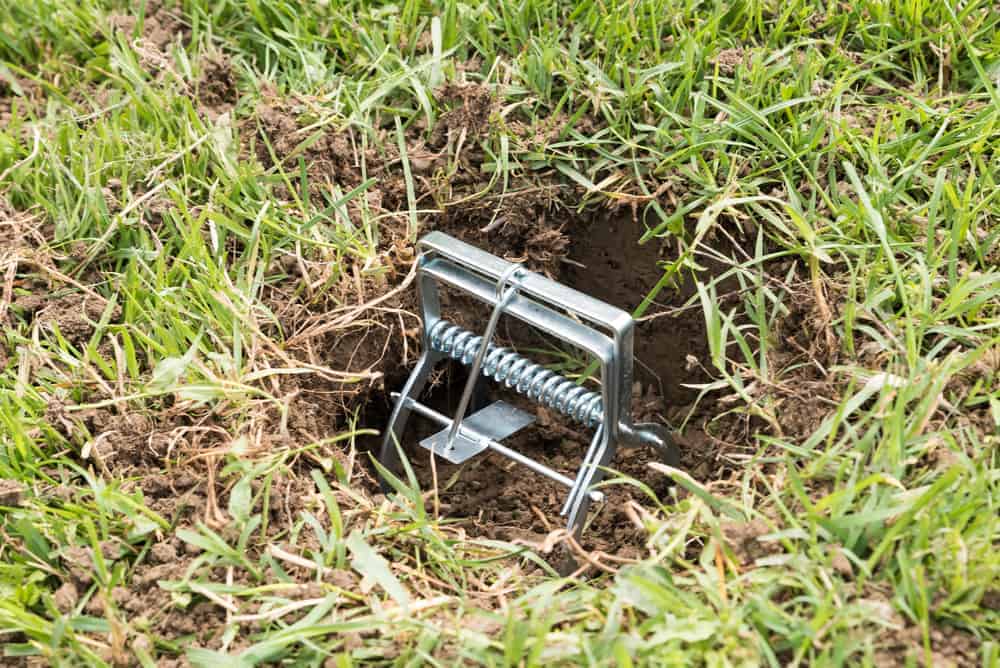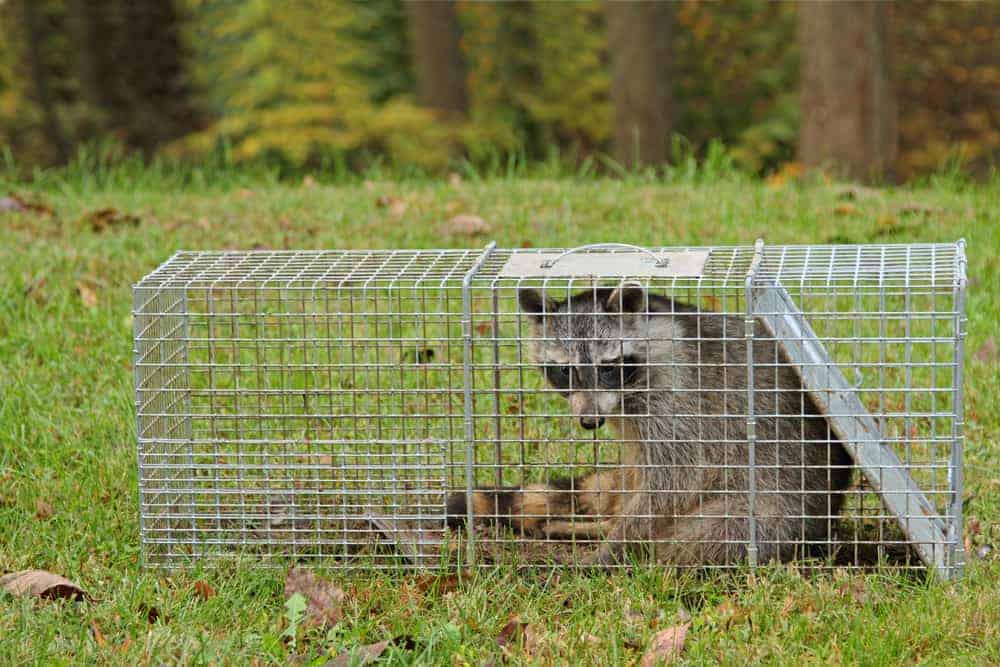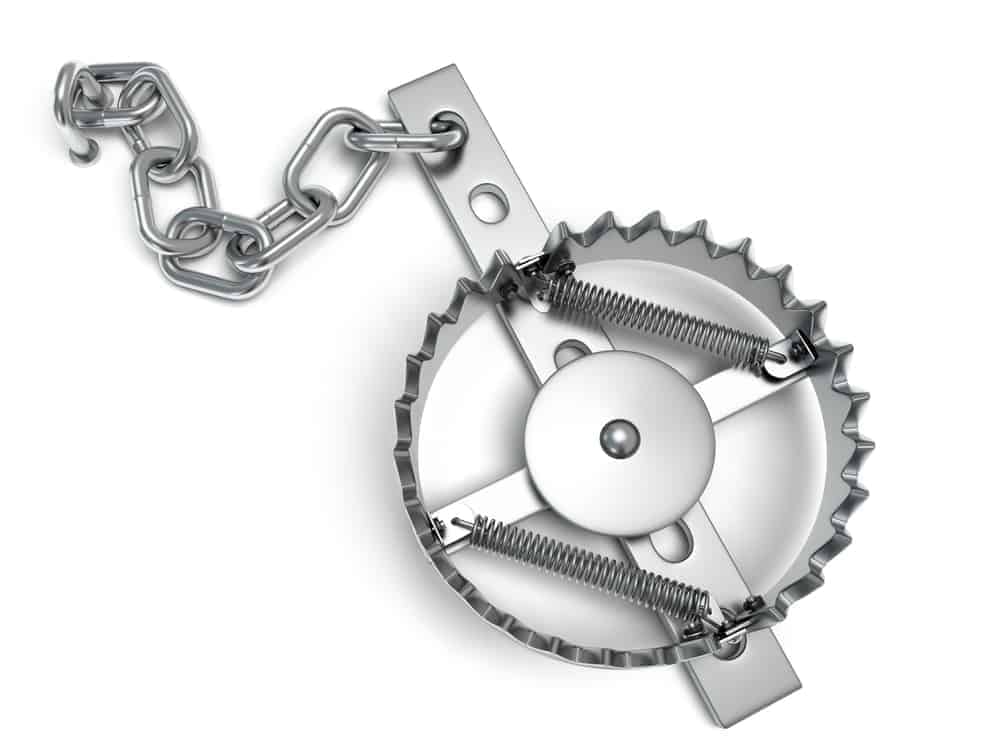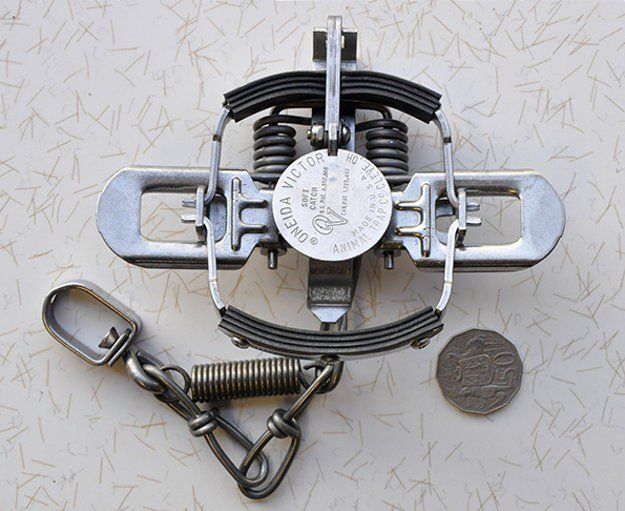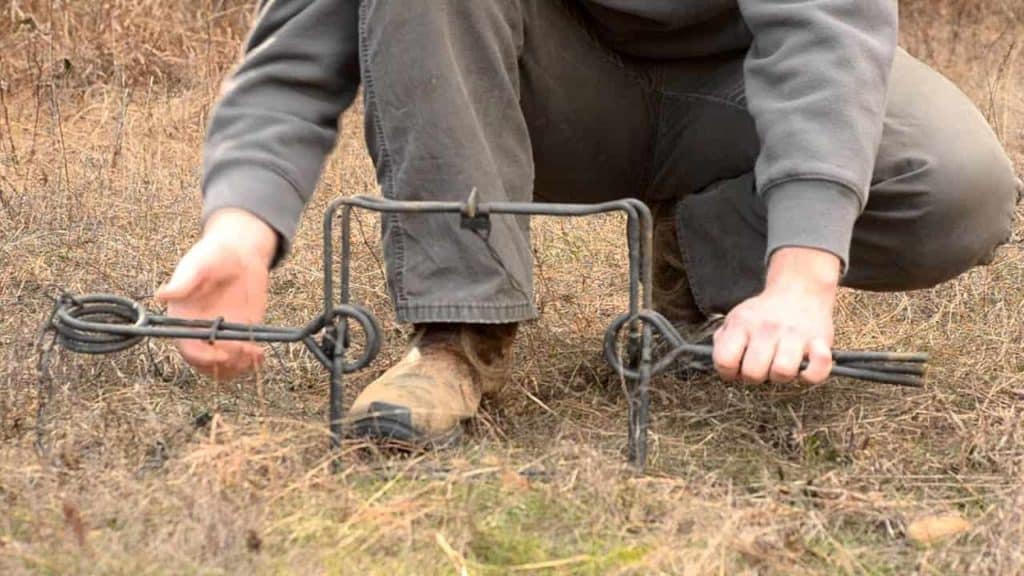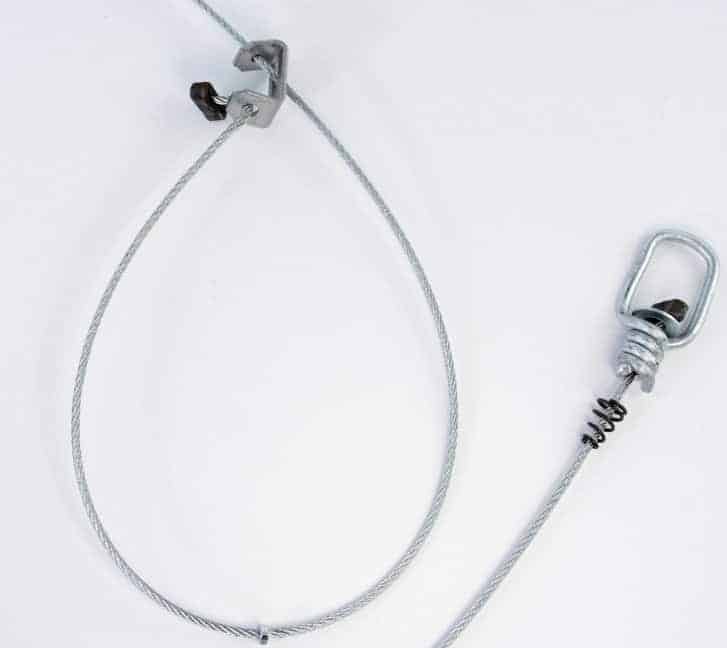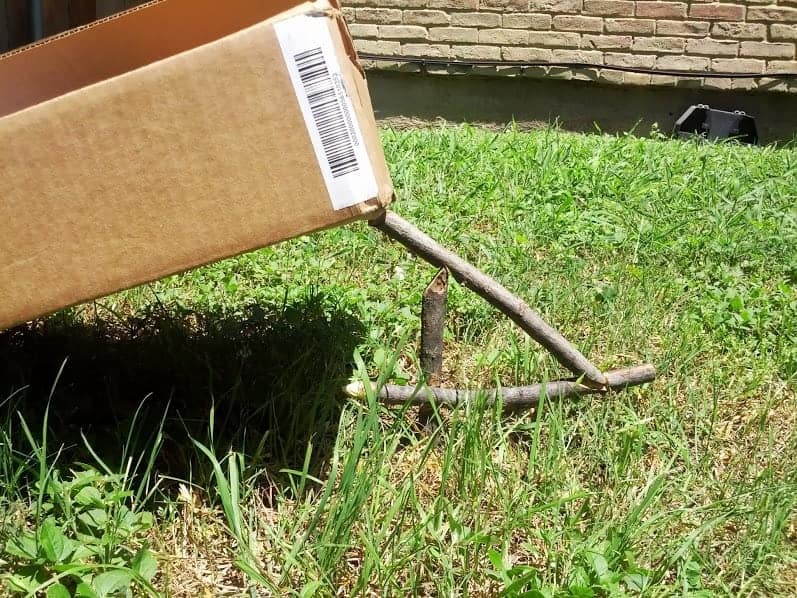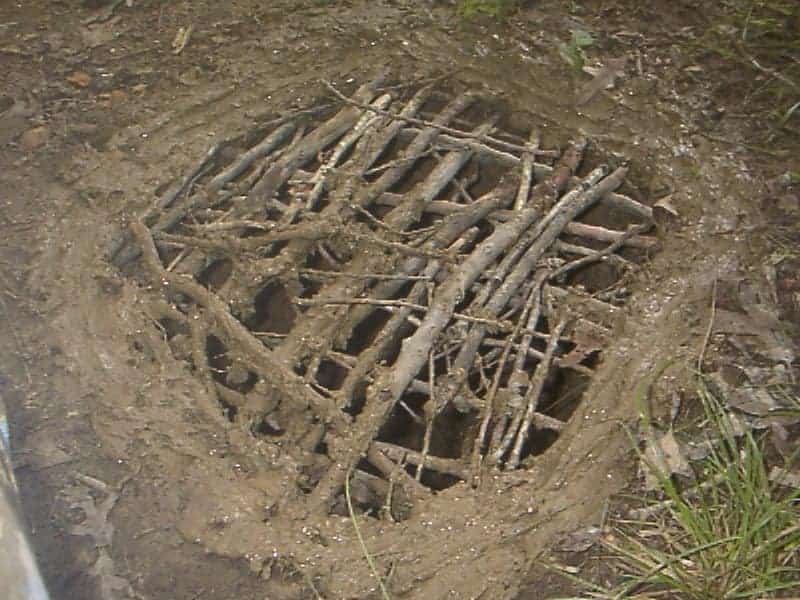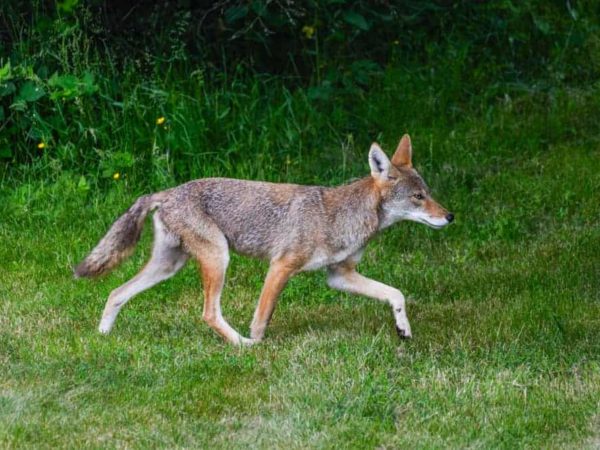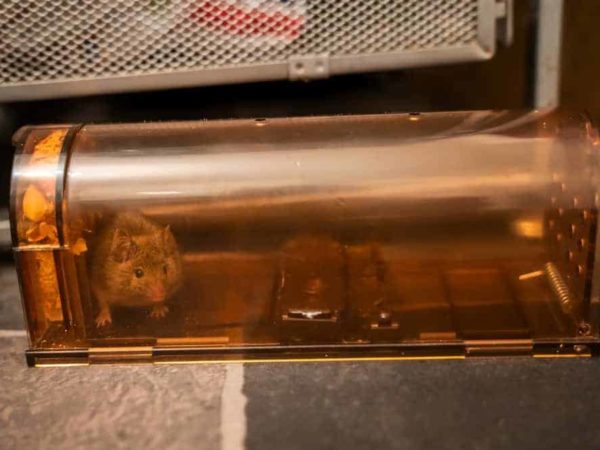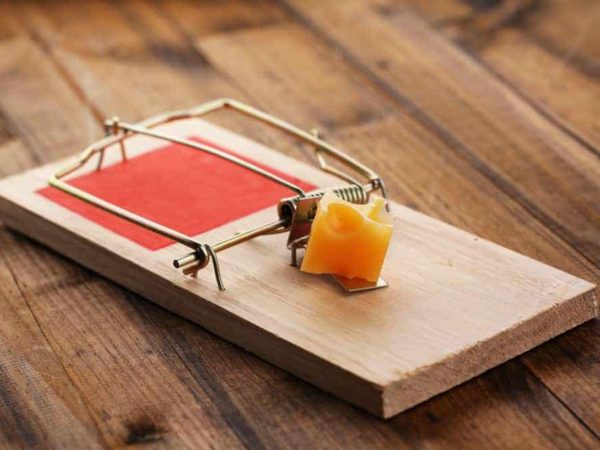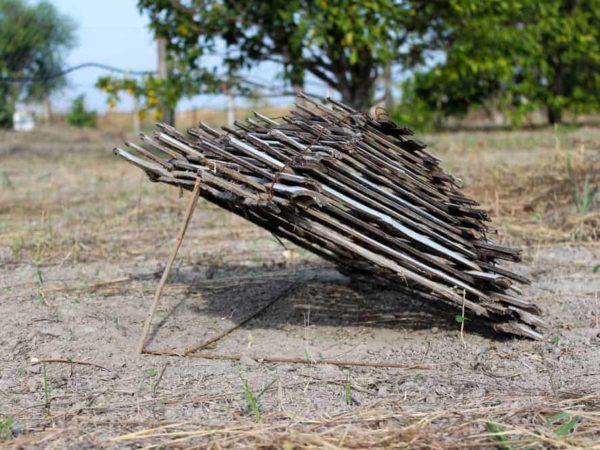There are lots of different reasons why you’d want to trap an animal. You might want it for milk, meat, horns, fur, or leather. You may want to domesticate the animal for companionship or labor. Or maybe the animal is damaging your property so you want to get rid of the threat.
In this latter case, it might be a mole uprooting your vegetables or a wild dog attacking your chickens. Of course, the types of animal traps you use will depend on the trapping purpose. For example, do you want the animal alive or dead? Do you want it maimed or protected?
As we explore these traps, it’s important to acknowledge the trapping techniques of indigenous communities. In our modern world, we often dismiss these practices, yet for centuries, local tribes lived in peace and harmony with the wildlife and plants around them.
We claim technology is the only solution to humane hunting and conserving environmental conditions, but many Native American, Asian, Aborigine, Inuit, African, and First Nation tribes have workable protections and sustainable practices built into their cultural lifestyle.
Another factor for animal traps is whether you can install them yourself or whether you’ll need outside help. Some animal traps are simple enough for a child to set up while others require a professional exterminator. So let’s dig deeper into the categories of animal traps.
Start by Watching Nature
As humans, we like to focus on the peaceful side of nature. We love watching animals feed their babies, walking among pretty flowers, or listening to the songs of colorful birds. But nature can be harsh and cruel too – just watch any safari documentary or sharks feeding.
And despite all our human sensibilities, many animals hunt to survive. So predators have evolved effective (but seemingly cruel) features to help them succeed. They may include mimicking the sounds of the prey, camouflaging their bodies, or growing bait on their backs.
Some of our human trapping techniques are copied from these animals, but we improve those techniques to make them more lethal. Other times, we modify organic traps to keep them ethical and humane, so we’ll look into cost-effective trap-and-release techniques too.
Seven Main Trapping Mechanisms
Depending on who you ask, animal traps can be divided into several categories. But how many types of animal traps are there? If you focus on the trapping mechanism, there are seven main types of traps. These are:
- Leghold traps – a strategically placed spring traps the animals’ leg or body part
- Body snares – a central trigger traps the whole animal
- Deadfalls – a heavy object falls on the animal to trap or crush it
- Pit or hole – the animals falls in and gets stuck or impaled
- Cages – a trigger-based door locks into place
- Glue traps – adhesive strips hold the animal in place
- Spring-loaded – a spring mechanism releases the trap door or snare
You can design these traps yourself using locally available materials.
Or you can buy them commercially. Some traps are customized for specific animals, so you may tweak the trap to fit the animal’s body. Or you can make a multipurpose trap that can capture several species.
It’s also helpful to get traps that exclude certain prey. For example, you might want a trap that can catch wolves or coyotes but you don’t want it to accidentally hurt your hunting dog. Adjusting the size, bait, camouflage techniques, or trapping mechanism can all be helpful.
Regardless of your target, traps can be humane or lethal. Ethical traps aim to hurt the animal as little as possible. So a spring trap might have padded claws or a soft rope that won’t break the animal’s skin, while a deadfall kill trap might have sharp spikes at the bottom of the hole.
Camouflage and bait are also important parts of animal traps. You can hide the trap under leaves, twigs, or branches. And you can load the trap with something your prey likes to eat, whether it’s poisoned fruit or a smaller dead creature that can easily attract your target.
Specific Types of Animal Traps
Now that we’ve looked at the overall workings of animal traps, let’s look at specific examples and types of animal traps. As we mentioned before, you can buy them or build them yourself.
1. Cage Traps (Spring)
These traps are commonly used by animal rescuers. They’re ethical traps so they don’t physically hurt the animal. However, the animal will feel stressed out, and they might harm themselves as they struggle to escape. That’s why you need to check (and empty) them often.
These traps have been around for a while though, so some animals have learned how to dodge them. Especially a feral animal that may have once been a pet, so it’s familiar with humans. The trap is baited with food and when your target steps in, the door snaps shut.
Cage traps are primarily spring-loaded, but they may use multiple triggers. A pressure plate springs up when the animal steps on it while a separate spring might lock the door. These cages sometimes include live bait locked in smaller cages. Their cries attract more prey.
2. Metal Leg-hold Trap (Spring)
These are some of the oldest types of animal traps in existence. They come in lots of different styles and were initially used to control poachers. Back in the 1600s, wealthy nobles had vast tracts of land and they enjoyed hunting for sport. But poachers often snuck into the ranches.
A metal leg-hold trap has spring-loaded teeth hidden under twigs and branches. When someone steps on the trigger, the metal teeth curl around the leg and trap it. With humans, this often amputated them. Later, the traps were adjusted in size and angle to catch animals.
The teeth would grip the animal’s leg so if they tried to break free, they hurt themselves more. An animal may exhaust themselves struggling, chew their leg off to get free, or bleed to death. It’s a cruel animal trap but can be quite effective. Animal groups abhor these traps.
3. Padded Leg-hold Trap (Spring)
The more ethical version of this animal trap is padded. It uses the same mechanism, but instead of raw metal teeth, the sides of the trap are padded with rubber, fur, or fabric. The trapped animal still can’t break free, but there’s no blood or broken skin.
The trap has enough weight to hold the animal in place, but the pressure isn’t enough to snap their bones. The trapped creature may still try to chew its foot free though, so check the traps regularly to avoid over-stressing the animal. Leg-hold traps are often baited with tempting food.
The danger with leg-hold traps – whether they’re padded or not – is that they’re indiscriminate. Remember, the trap is hidden under brush, so it could just as easily be triggered by a pet, children’s toys, or even an unsuspecting person talking a nature walk.
4. Snare Trap
You can think of a snare as a hidden noose. It might be made of thin wire, fishing line, paratrooper chords, nylon, or any ductile material that’s sturdy enough to hold the animal in position. The trap can be designed to trap an animal’s neck, leg, or even its whole body.
The snare can be baited and camouflaged. Some will keep the animal from running off while others will yank the animal into the air and suspend it. It’s a cruel kind of trap because while it won’t immediately hurt the animal, it will tighten as they struggle to get themselves free.
As the chord gets tighter, the animal can suffocate, get strangled, or develop internal organ injuries that will eventually kill it, so death is slower and more painful. Check your snares regularly to avoid the trapped animal from suffering unnecessarily. Bait isn’t mandatory.
5. Conibear Trap (Spring)
At a glance, you may think this trap is more ethical than steel claw traps because you can’t see any sharp surfaces. It has hinged rectangles that look almost benign. But this body-grip trap strangles the animal in a scissor-like fashion. It’s named after inventor Frank Conibear.
That way, the fur traders can simply come and grab the fur, using the meat to bait future traps. Conibear traps are positioned as instant-kill traps. They break the trapped animal’s neck and sever its spine, so they die a gruesome death. And this death can be quite slow.
How so? Isn’t snapping an animal’s neck the quickest way to end its life? And doesn’t that make it a humane death? Well, yes, if the animal is the right size. But smaller animals can get trapped by the conibear too, and because their dimensions are wrong, they die far slower.
6. Coiled Foothold Trap (Spring)
Foothold traps can be long or short, depending on the type of animal you intend to catch. And you can get waterproof ones for use with water-based animals like beavers, otters, or even seals. Older leg-hold traps had long arms or shorter pressure plates called jumps.
But newer ones use a coiled spring rather than a regular one. The coils are made using musical wire – the kind used for the strings of guitars, violins, or pianos. These wires are finer and more delicate, so they’re more sensitive when triggered. And they need less space.
This makes the coiled traps easier to hide, especially as contemporary creatures get cleverer about avoiding traps. Coiled music wear is more ‘elastic’ but has less pressure than traditional springs and pressure plates, so coil traps are less likely to kill or hurt the animal.
7. Ethical Snares
Just like regular snare traps, these nooses are hidden in tall grass, tree lines, or under fence lines where animals regularly sneak in. They work like regular snare traps, but they have a few adjustments that make them safer and kinder to your prey. For example, the breakaway.
This safety feature allows bigger animals to release themselves from the snare. If they’re over a certain weight, they’ll be strong enough to trigger the breakaway and exit the trap. Another example is controlled loop size. By limiting the diameter of the snare, animals can slip out.
Both these adjustments make it easier for non-targeted animals to escape the trap. These features also help to ensure the animal doesn’t get too badly hurt. Positioning the snare is an important factor too – a leg snare for a fox can be an inadvertent body snare for squirrels.
8. Deadfall Traps
The traditional deadfall trap looks like something Wile. E. Coyote would create. It’s a heavy object, usually four or five times larger than the target animal, and it’s triggered by a tripwire. The object is intended to fall on the prey, ideally killing it quickly and efficiently.
But today’s deadfall traps are intended to catch the animal, not crush it. So the tripwire and stick may be attached to a box, cage, or trap that will fall over the animal, locking it inside. The simplest version of a deadfall trap might use a milk crate or a sturdy cardboard box.
It’s a common tactic when you’re being harassed by raccoons, squirrels, wild rodents, or stray cats. But this only works if the animal can’t scratch its way out. Also, you’d have to figure out how to raise the trap without the animal rushing out to escape … or get its revenge on you.
9. Pit Trap
Here’s another ancient trapping technique. It works well on large animals that can’t burrow or climb out of the hole. The gentler version is a large covered hole that an animal falls into as they run past the camouflaged spot. You can place bait near the hole to attract your prey.
While this is a gentler option, it’s still a violent trapping technique because the animal can break its limbs as it falls or scratch its eyes, ears, or organs on the sticks and branches you’ve used for camouflage. But the most extreme version of this pit places spikes at the bottom.
These spikes can be sharpened twigs, pointed metal rods, or even jagged rocks. The spikes pierce the animal’s limbs and belly, stopping the animal from moving and sometimes killing the animals. The hole can be lined with brick or concrete to stop the animal climbing out.
The Last Leg
Exactly how many types of animal traps exist today? It depends on how you classify them. If you focus on the technique, there are three types – spring-loaded, cable snares, and holes. If you think about morality, there are two types – painful kill-traps and gentler, ethical traps.
If your interest is in the trapped section, you can classify animal traps into body traps and leg traps. Or you might take a broader categorization and go with bait vs no bait or hidden traps vs zero camouflage. Your main criterion is whether you want meat or fur, alive or dead.
What types of animal traps have you tried using? Tell us your experience in the comments!

